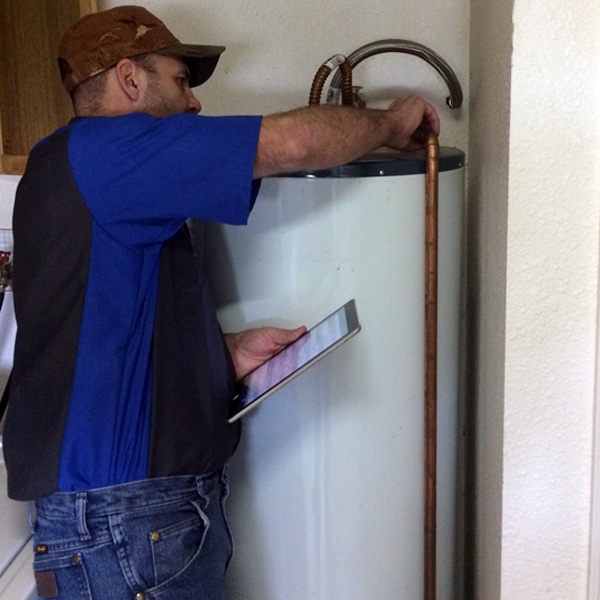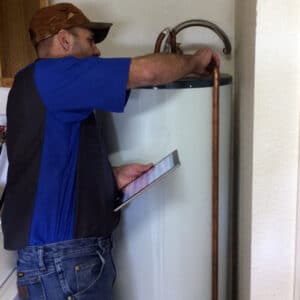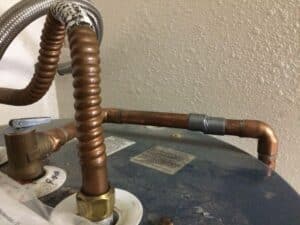Temperature and pressure (T&P) relief valves used on residential water heaters are typically designed and manufactured to relieve on pressure at 150 psig and on temperature at 210 degrees F. These relief valves protect the water heater from excess pressures and temperatures by discharging water.
In normal operation of the water heater and T&P valve, no water should be discharged from the valve. A T&P valve that discharges is an indication of an abnormal condition in the system and by discharging, the T&P valve is meeting its designed safety purpose. The causes of discharge can be thermal expansion, excess system pressure, low temperature relief, too high a setting on the water heater, or something in the water heater causing excess temperatures in the heater.
To avoid water damage or scalding due to valve operation, discharge line must be connected to valve outlet and run to a safe place of disposal. Discharge line must be as short as possible and be the same size as the valve discharge connection throughout its entire length. Discharge line must pitch downward from the valve and terminate at least 6″ (152mm) above floor or a drain where any discharge will be clearly visible. No shut-off valve shall be installed between the relief valve and tank, or in the discharge line.



